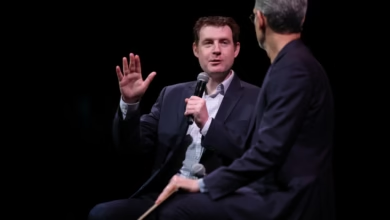Breaking Data Silos: SA Pathology’s Journey to Connected Care

▼ Summary
– Australia’s healthcare interoperability has recently shifted from aspiration to action through cross-sector collaboration and the adoption of the FHIR data standard.
– SA Pathology is transforming care by moving from application-centric systems to data-driven models, improving efficiency and reducing manual data entry in workflows like electronic requesting.
– The cultural shift involves empowering patients to actively manage their health with accessible data and computable guidelines that provide actionable insights, moving beyond paper-based digital replicas.
– Clinician buy-in for interoperability is achieved by focusing on practical outcomes, such as reduced turnaround times and improved patient engagement, rather than technical jargon.
– National initiatives like My Health Record and Sparked are advancing structured data sharing and connected care to support better diagnostics, reduce clinician burnout, and enhance patient outcomes.
For quite some time, the goal of achieving true interoperability within Australia’s healthcare system felt more like a distant dream than an attainable reality. However, the landscape has dramatically shifted over the past two years. A powerful wave of collaboration is now uniting digital health providers, pathology services, clinicians, and government bodies, turning ambitious discussions about connected care into concrete, actionable projects. The era of simply planning for a connected future is over; we are now actively constructing it.
This tangible progress is evident at organizations like SA Pathology, where ICT Manager Keith Kranz is spearheading a significant operational evolution. He observes that healthcare has traditionally centered around specific applications, a practice that unfortunately created isolated data islands and fostered vendor dependency. The necessary pivot, he argues, is toward a data-driven framework where critical information can move seamlessly to the individuals who require it for decision-making.
Central to this new approach is the adoption of FHIR (Fast Healthcare Interoperability Resources), a globally recognized standard that structures healthcare data to be both computable and easily shareable. Kranz emphasizes that implementing FHIR is far more than a simple technical enhancement; it forms the essential bedrock for elevating patient care. He notes that to effectively leverage advanced tools like artificial intelligence, the prerequisite is high-quality data, which begins with standards that liberate information from outdated legacy formats and translate it into a universal language.
This fundamental shift is being actively supported by industry partners. As Duncan Weatherson of Smile points out, achieving interoperability involves overcoming not just technical hurdles but also semantic, structural, and cultural ones. The task extends beyond merely linking different computer systems; it requires harmonizing the language and clinical intent across diverse care environments to generate data that is genuinely meaningful and actionable.
The impact of this transformation at SA Pathology is already yielding measurable benefits, particularly in streamlining the interaction between primary care and diagnostic services. The old, inefficient process required General Practitioners to print pathology request forms for patients, who then physically carried them to collection centers, necessitating manual data re-entry. With the introduction of electronic requesting, these forms are now transmitted digitally directly to SA Pathology, which significantly boosts efficiency, enhances data accuracy, and improves the overall patient journey.
Kranz highlights the operational clarity this provides, stating that they can now effectively manage patient flow, anticipate volumes, eliminate duplicate data entry, and alleviate congestion at collection centers. For clinicians, this translates to a smoother test ordering process and a more comprehensive view of patient activity. For the patients themselves, it means shorter wait times and a more continuous care experience.
Concurrently, Australia’s national digital health record, My Health Record, is undergoing its own critical evolution. Moving beyond its initial limitations of PDF-based document storage, the platform is now progressing toward FHIR-based APIs and the sharing of structured data. This advancement is vital because patient information should not merely be archived; it must be readily usable for clinical purposes.
The journey of SA Pathology serves as a powerful example of what becomes possible when the focus remains squarely on outcomes. By digitizing decades of historical results, transitioning to atomic data structures, and implementing standardized coding systems like SNOMED and LOINC, the organization is enabling sharper clinical insights and accelerating decision-making. Initiatives such as e-requesting are modernizing workflows that were once dependent on paper, saving valuable time for clinicians and enhancing the patient experience.
Perhaps the most profound change, however, is cultural. As Australians grow increasingly accustomed to managing their daily lives via smartphones, empowering them to oversee their health in a similar way is a natural progression. Keith Kranz suggests that the sector has been overly proficient at digitally replicating old paper-based processes. The future, he believes, lies in completely reimagining care delivery. This involves actively including patients in the conversation and providing them with access to their health data in a format they can easily understand and utilize.
This philosophy transforms the patient’s role from a passive recipient of care to an active participant. By improving the design of pathology reports for both clinicians and consumers, health information becomes more accessible and actionable for everyone.
This is where computable guidelines prove their worth. Duncan Weatherson describes these as intelligent systems capable of performing significant cognitive tasks, such as identifying potential risks, tracking result trends over time, and suggesting early interventions. Envision receiving a pathology report that doesn’t just present a column of numbers but also offers a simple, explanatory narrative: “Your cholesterol level is slightly high and has been gradually increasing over the last three years – consider discussing this with your GP.” This represents a vastly different and more supportive experience than attempting to decipher a standalone table of values.
Kranz likens this to empowering individuals to become “citizen scientists”—people who are knowledgeable about and engaged with their own health information. When this level of engagement is achieved, the benefits compound throughout the system. He explains that by enabling one segment of the population to effectively manage their health, the healthcare system can redirect precious time and resources to support those with more complex medical needs.
Winning the support of clinicians is fundamental, and it begins by clearly articulating the ‘why’ behind these changes. The technical rationale for interoperability may be sound, but securing clinician buy-in demands more than a standards-based plan. It requires empathy, demonstrating clear relevance to their work, and a practical appreciation of their daily challenges. Here are several effective strategies for healthcare leaders to communicate the value of connected care in a way that resonates with clinical teams:
Focus on tangible outcomes, not technical jargon. Present interoperability as a tool that enables better clinical practice, not as another administrative obligation. Illustrate how data flows powered by FHIR can shorten result turnaround times, decrease documentation burdens, and facilitate proactive patient care.
Use real-world examples that clinicians recognize. Highlight practical improvements, such as a reduction in duplicate testing or the streamlined efficiency of e-requesting, by grounding them in familiar, everyday workflows. Clinicians are most convinced by concrete, peer-validated scenarios.
Keep the patient perspective central. Stress how improved data presentation aids clinicians in having more productive and meaningful conversations with their patients. An empowered patient is not only more likely to adhere to treatment plans but is also more deeply engaged in their own health journey.
Prioritize a seamless user experience. Invest in intuitive user interfaces and design alongside back-end infrastructure. If the technology feels cumbersome or adds even one unnecessary click to a clinician’s routine, its perceived value plummets, regardless of its underlying sophistication.
Foster trust through collaborative design. Clinicians do not want to be marketed to; they want their expertise to be valued. Involve them from the earliest stages of interoperability projects and maintain their involvement. Their practical insights will refine the final solution, and their endorsement will dramatically speed up widespread adoption.
Major investments are being made in the foundational infrastructure needed to realize this vision, including scalable platforms, architectures built with privacy as a core principle, and solutions that render health data visible, secure, and genuinely useful.
This work is not happening in a vacuum. Initiatives like the Sparked interoperability project, which brings together hundreds of clinicians, technologists, and policymakers from across Australia, underscore the widespread enthusiasm and collective dedication to this shared goal.
Ultimately, interoperability is about much more than just connecting IT systems. It is about generating tangible value at every level—from reducing clinician burnout and enabling more intelligent diagnostics to personalizing care plans and delivering superior health outcomes for patients.
When pioneering organizations like SA Pathology demonstrate what is achievable, they light the way for the entire sector. The future of healthcare is not fragmented and isolated. It is shared, deeply connected, and intelligently guided by data.
(Source: ITWire Australia)




